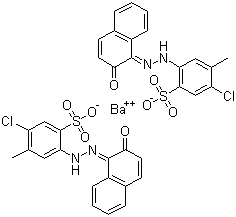Introduction
Pigment Red 53:1 (PR53:1), also known as Lithol Rubine Red, is a classic azo lake pigment widely used for its bright bluish-red hue and cost-effectiveness. As a calcium salt of a sulfonated azo dye, it offers excellent color strength and moderate durability, making it a popular choice for inks, coatings, plastics, and cosmetics.
In this article, we’ll explore its chemical properties, key applications, performance limitations, and market trends to help manufacturers and formulators make informed decisions.

Chemical Properties of Pigment Red 53:1
Composition & Structure
-
Chemical Class: Monoazo lake pigment (calcium salt).
-
CAS No.: [Insert CAS number if available, e.g., 5160-02-1].
-
Molecular Formula: Typically C~18~H~12~CaN~2~O~6~S.
Key Characteristics
| Property | Details |
|---|---|
| Color Index | PR53:1 (CI 15585:1) |
| Shade | Bright bluish-red |
| Density | ~1.5–1.7 g/cm³ |
| Particle Size | 0.1–0.5 µm (affects dispersibility) |
| Heat Resistance | Up to 180–200°C (limited for high-temp plastics) |
| Lightfastness | Moderate (3–4 on ISO scale; suitable for indoor use) |
| Solubility | Insoluble in water, slightly soluble in polar solvents |
Manufacturing Process
PR53:1 is synthesized via a two-step process:
-
Azo Coupling: A diazonium salt reacts with a naphthol derivative (e.g., 2-naphthol-6-sulfonic acid).
-
Laking: The sulfonated dye is precipitated with calcium chloride to form an insoluble pigment.
Modifications (e.g., surface treatments) can improve wettability and dispersion stability in end-use formulations.
Major Applications
1. Printing Inks (Primary Market)
-
Packaging Inks: Used in flexographic and offset inks for food labels, cartons, and magazines.
-
Advantage: High tinctorial strength reduces usage costs.
-
Limitation: Not ideal for outdoor prints due to moderate UV resistance.
2. Coatings
-
Decorative Paints: Interior wall coatings, automotive trim (where lightfastness isn’t critical).
-
Industrial Coatings: Toys, stationery, and consumer goods.
3. Plastics
-
PVC, LDPE, and PS: Used in toys, household items, and synthetic fibers.
-
Note: Degrades above 200°C; unsuitable for engineering plastics like ABS.
4. Cosmetics & Food Contact Materials
-
Lipsticks, Blushes: Must comply with FDA/EC regulations for heavy metals (PR53:1 is generally safe).
-
Food Packaging: Requires FDA 21 CFR or EU 10/2011 compliance.
Performance vs. Alternatives
| Pigment | Shade | Lightfastness | Cost | Best For |
|---|---|---|---|---|
| PR53:1 | Bluish-red | Moderate | Low | Inks, indoor coatings |
| PR57:1 | Redder | Better | Medium | Plastics, inks |
| PR48:2 | Yellowish-red | Good | Medium | Outdoor coatings |
| Quinacridone (PR122) | Violet-red | Excellent | High | Automotive, high-end coatings |
Why Choose PR53:1?
-
Cost-effective for mass-market applications.
-
Bright hue outperforms cheaper inorganic reds (e.g., iron oxides).
Market Trends & Regulations
Global Supply
-
Top Producers: China (e.g., FineLand Chem), India, and Europe.
-
Pricing: $5–15/kg (varies by purity and volume).
Regulatory Compliance
-
REACH (EU): Registered for industrial use.
-
FDA (US): Approved for food-contact materials (specific grades).
-
Eco-Friendly Shift: Demand for heavy-metal-free pigments is rising.
Future Outlook
-
Challenges: Competing with high-performance pigments (e.g., quinacridones).
-
Opportunities: Modified grades for better heat/light resistance.
-
Emerging Uses: 3D printing filaments, textile dyes.
Conclusion
Pigment Red 53:1 remains a workhorse red for cost-sensitive applications, particularly in inks and plastics. While its lightfastness limits outdoor use, ongoing R&D (e.g., polymer coatings) may expand its versatility.
Need PR53:1 samples or technical data? Contact suppliers like FineLand Chem for specifications tailored to your needs.





